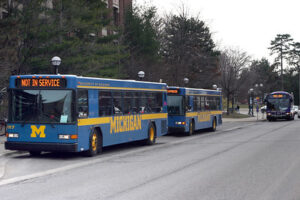Enrollment declines are nothing new at the community college level. Enrollment has been dropping for more than a decade. But how will community colleges fare when they compete against other post-secondary options?
Currently, about 4 out of 10 workers approaching retirement age have absolutely no money set aside for the day when they will no longer be working. For these people, remaining employed may be their only option, especially if they’re among the 60% of senior households that carry debt.
It is not sufficient for community colleges to treat adult learners as though they can take any entry level job and move up through the ranks. Many of them cannot. People who are changing careers, women returning to the workforce after raising children or going through a divorce, or people who – for whatever other reason – are just starting over.
Having career options that will enable them to earn enough to support a family, pay down their debts, and prepare for retirement would go a long way toward reversing their enrollment declines. And that may be a strategy that community colleges need to explore.
In a recent article in the Washtenaw Voice, WCC President Rose Bellanca indicated that she believes that WCC’s enrollment declines stem from four-year universities offering free tuition to low-income students. (Mmmm kayyyyyy.) In other words, WCC is losing students because it can’t compete with other institutions. (I wonder who’s responsible for that?)
Interestingly, the State of Michigan has leveled the “cost of attendance” playing field through the Michigan Reconnect and Futures for Frontliners programs. And low-income students are eligible for Pell Grants, which also would likely zero out the cost of attendance at a community college. So now that money is not really the issue, why do we still see community college enrollment declines?
Reversing community college enrollment declines
About one-third of Michigan’s recent high school graduates don’t immediately enroll in post-secondary programs. There may be opportunities in that demographic to reverse enrollment declines. There are also opportunities to improve WCC’s abysmal graduation rate (27%).
If I had a plan to fix the enrollment, it might include taking a long, hard look at the actual earning potential of the degrees and certificates. (Not using theoretical numbers, but actual earnings data from my alumni.) It might include getting rid of every single program that does not lead to living wage jobs. If I wanted my institution to compete more effectively for students, I would develop a laser-like focus on building occupational programs that created a pathway to the middle class. (In Michigan, that’s going to be a job with a salary of about $45,000 per year.) And I certainly wouldn’t issue press releases promoting training that leads to $12/hour jobs.
You know the old saying, “Money talks?” If I did all that, I’m pretty sure that my classrooms would be full.
Photo Credit: Derek Bruff , via Flickr



























